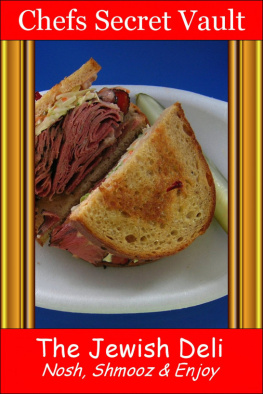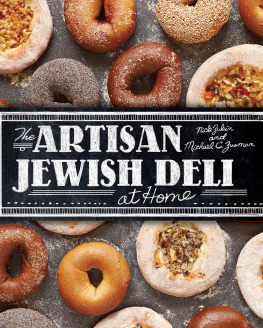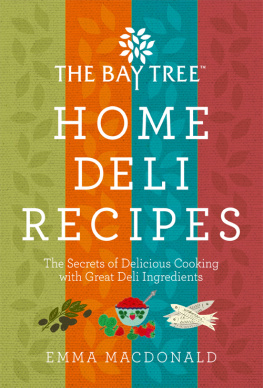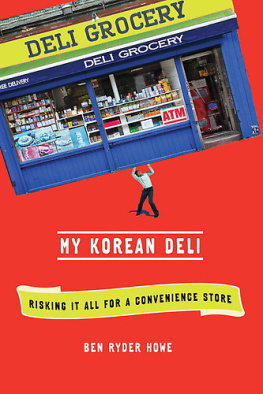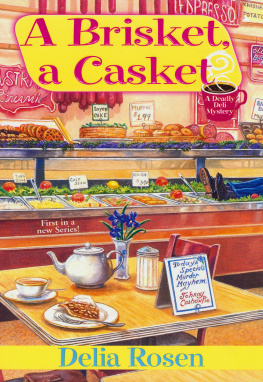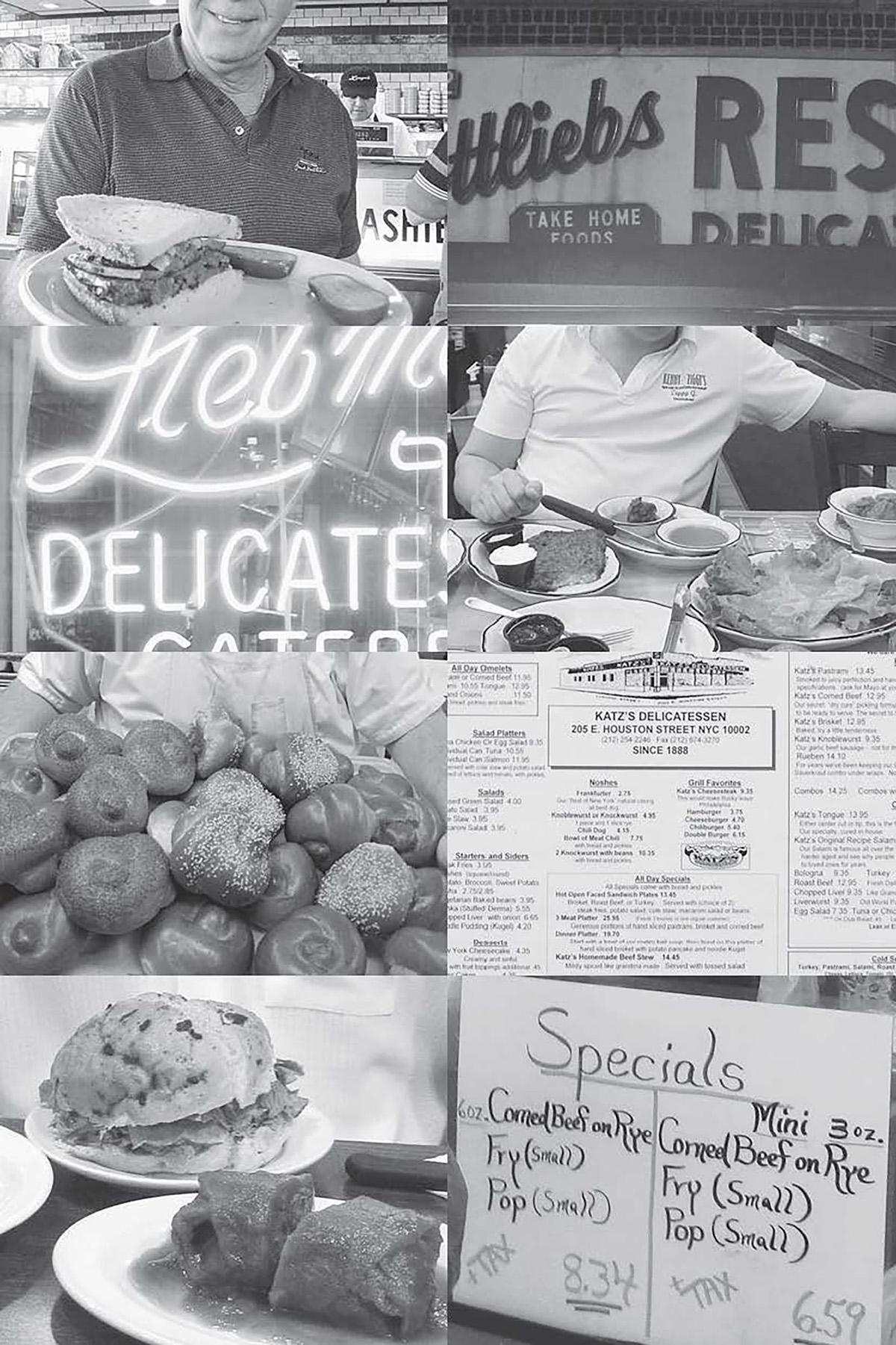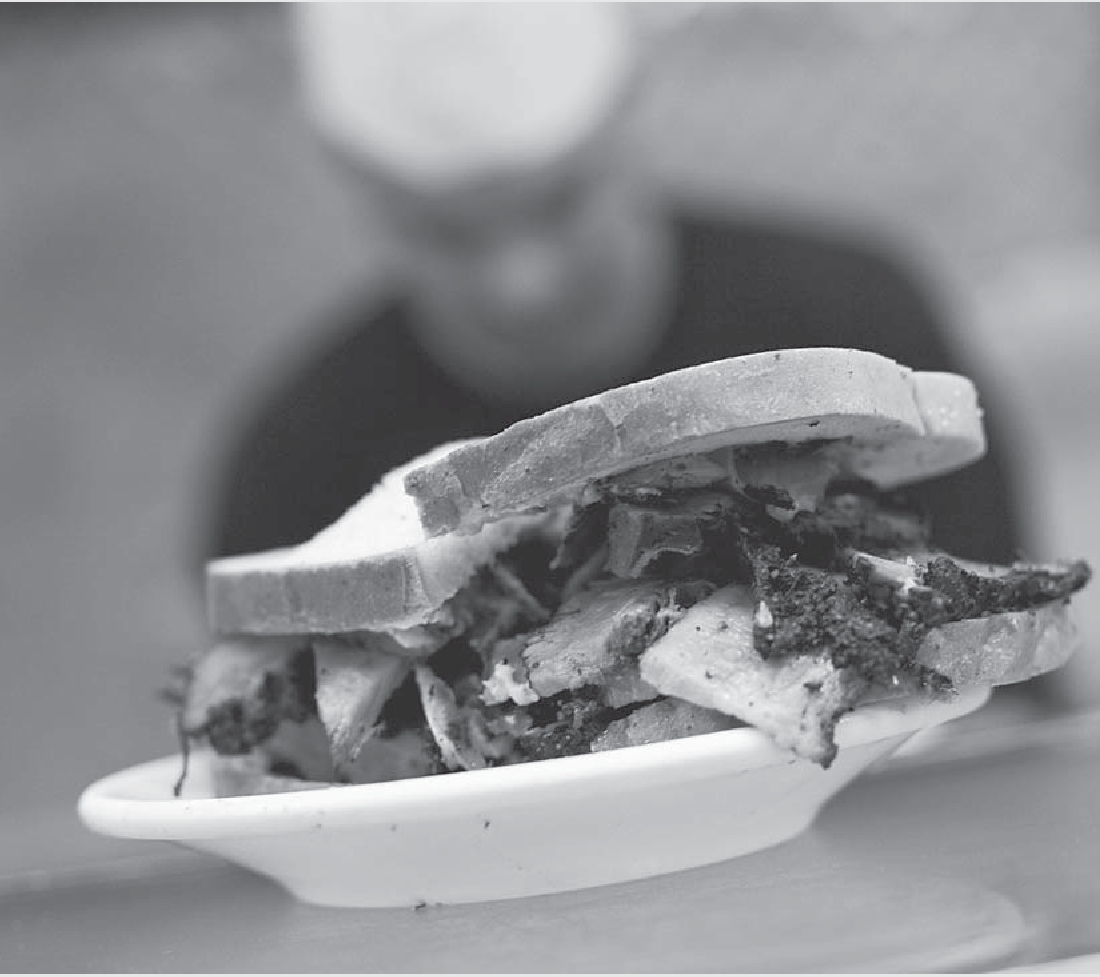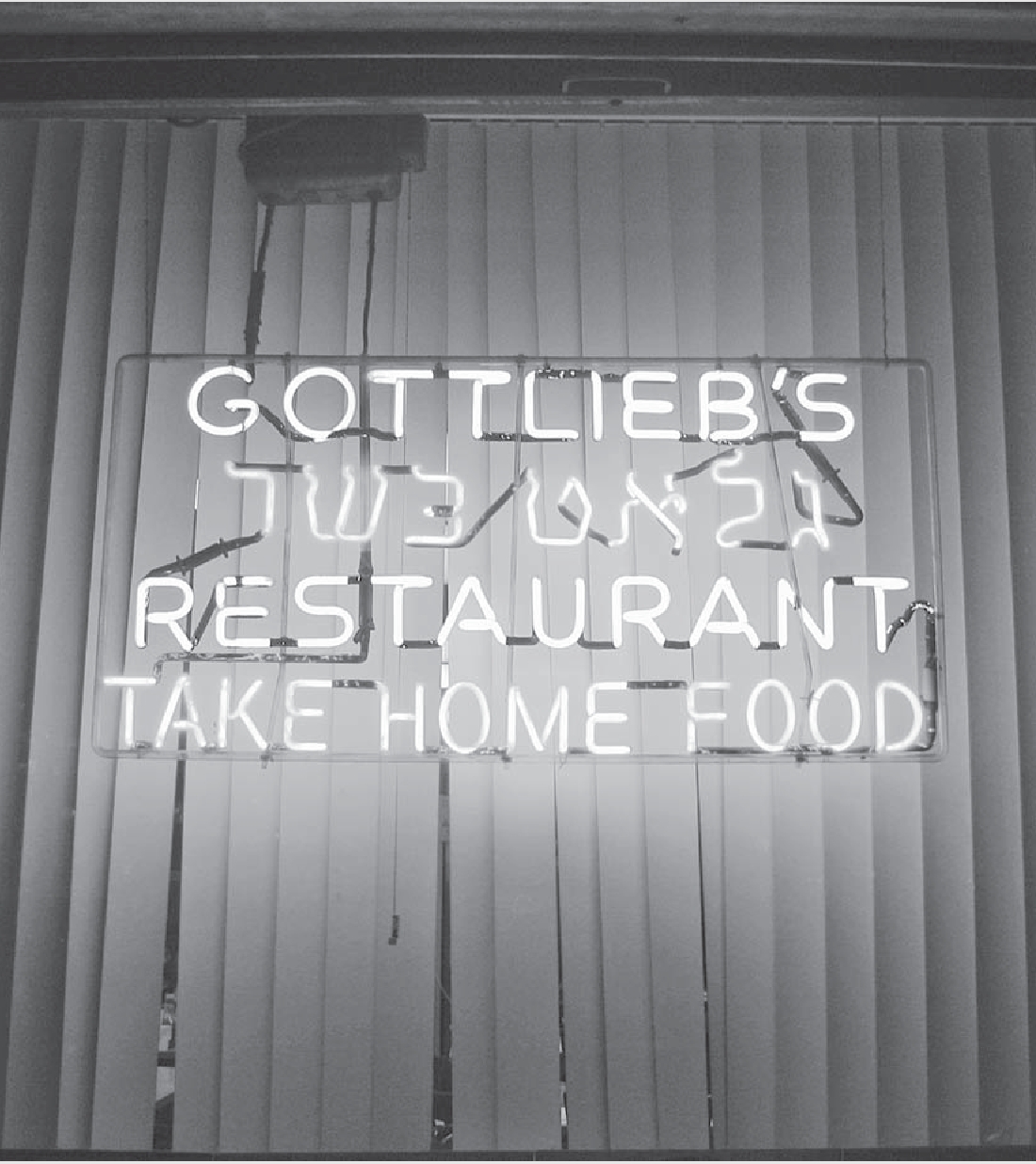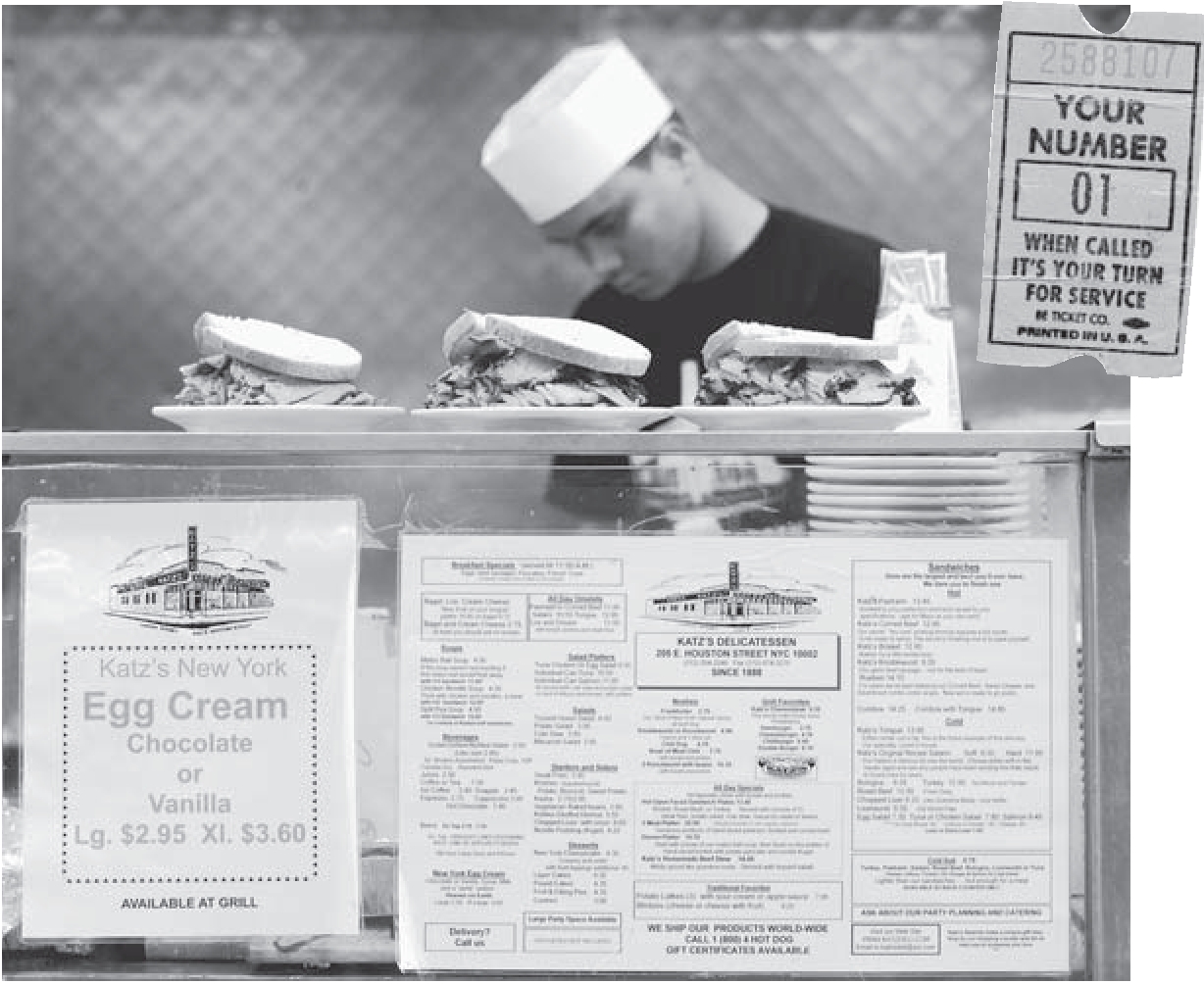Copyright 2009 by David Sax
ALL RIGHTS RESERVED
For information about permission to reproduce selections from this book, write to or to Permissions, Houghton Mifflin Harcourt Publishing Company, 3 Park Avenue, 19th Floor, New York, New York 10016.
www.hmhco.com
First published in Canada in 2009 by McClelland & Stewart Ltd.
The Library of Congress has cataloged the print edition as follows:
Sax, David.
Save the deli : in search of perfect pastrami, crusty rye, and the heart of the Jewish delicatessen / David Sax.
p. cm.
ISBN 978-0-15-101384-5
1. RestaurantsHistory. 2. DelicatessensHistory. 3. Jewish cookery. I. Title.
TX 945.4.S393 2009
647.9509dc22 2009013743
e ISBN 978-0-547-41735-6
v1.1115
TO POPPA SAM SAX,
AND THE DELI-LOVING FAMILY HE RAISED
Anytime a person goes into a delicatessen and orders a pastrami on white bread, somewhere a Jew dies.Milton Berle
Introduction
Two years before I was born, my grandfather Poppa Sam Sax died by way of a smoked meat sandwich from Schwartzs Hebrew Delicatessen in Montreal. Piled high with extra speck (paprika- and cayenne-dusted, twice-smoked slices of pickled fat), he devoured the ill-advised delicacy immediately on his release from the hospital, where he had been treated for angina. Undaunted, he indulged in the greasy treat, celebrating his vibrant life in the fullest way possible... by ending it in a blaze of mustard-soaked glory.
But oh, the seconds before, when the steaming, spicy smoked meat melted the white fat between those rye slices, combining into a flavor explosion that no Jewish man of his generation could possibly resist. Did he feel the tightening of his chest after the first few bites? Did he chalk it up to that momentary high that comes from eating a truly great deli sandwich, when the senses are heightened and the body shuts down to savor the pleasure? Who knows? All that matters is that he died as he livedin love with Jewish delicatessen. I never met Poppa Sam, but his legacy has slowly pickled my soul with a craving for salt, garlic, and secret spices. It is the continuation of a flavor-bound tradition that worships fatty sandwiches in brightly lit temples of abusive service and clanging dishware. Some bloodlines pass down intelligence, wealth, or physical strength. Not mine. My birthright was an unconditional love of deli.
This is a book about Jewish delicatessen, about delis history and characters, its greatest triumphs, spectacular failures, and ultimately the very future of its existence. This book is a look deep into the world of the Jewish deli, told through the histories and experiences of those who keep it alive. It is the tale of the immigrant counterman, the no-nonsense supplier, the kvetching customer, and the fourth-generation deli owner, all of whom are balancing the tastes of tradition with the necessities of a business. It is a book about the economics of a nineteenth-century trade in the modern world and the pressures delicatessens face, financial and otherwise, that have caused many to disappear.
Foremost, this book is about the meats one finds in a Jewish delicatessen: aromatic corned beef, peppery pastrami, braised brisket, garlicky salami, and silken tongue. But it is also about steaming bowls of chicken soup with fluffy matzo balls, and Yiddish-named dishes that start with K: knishes, kishke, kasha varnishkes, kreplach, kugel. It is about rye bread, garlic-soaked pickles, and mustardwhether yellow or brown, but always mustard, because butter and mayonnaise do not belong in this book.
When authentic New York pastrami is served shrink-wrapped between stale slices of white bread in Nebraska gas stations, the longing for Jewish delicatessenreal Jewish delisticks in your gut like a half-digested knish. The delis that inspired this book are worthy institutions: temples of worn Formica and chipped dishware fronted by a Jewish surname in the possessive: Steinbergs, Dales, Malachs, Saxs.
That these places are the last of a dying breed is the sad truth driving my crusade to save the deli. Across North America, and in select cities of the Diaspora, Jewish delicatessens are disappearing faster than chicken fingers at a bar mitzvah buffet. People have been decrying delis demise for decades. Mom and Pop labored long and hard in their corner deli, but they no longer prevail, wrote Kevin Leonard in the obscure 1976 book The Dilly Deli Guide and Cookbook. Though his book was mostly a travel guide, his sense of the deli businesss perilous state was dead on: Except for a fortunate few, many now simply endure. Three decades later, it is telling that fewer than a dozen of all the delicatessens listed in Leonards book remain in business.
In many cities delis simply no longer exist. In others, one or two holdouts are barely hanging on. Traditional products are disappearing from menus and shelves because they dont fit into the bottom line. As have gone the Jews, so too have gone their nearby delis. So in many ways, this is a book about the Jewish experience, told via Jews most recognized contribution to the American table.
But the situation is not without hope. Delis do their best against tremendous odds. Places like Katzs Delicatessen in New York or Shapiros in Indianapolis are some of the oldest restaurants in North America. Jewish deli clearly has the ability to endure. But can it thrive, and how?
I have spent the past three years searching out an answer, embarking on an obsessive quest to save the Jewish deli. I have ingested mountains of cured meats, rivers of mustard, and lakes of chicken soup in sixteen states, two provinces, and six countries. In these pages I hope to open your hearts to the same unrestrained love of Jewish delicatessen that I feel... and then subsequently fill those hearts with cholesterol. So head over to your favorite Jewish deli, pick up a pound of pastrami, another of corned beef, a loaf of rye, some full sour pickles, a jar of mustard, and a case of Dr. Browns. Dont forget the matzo ball soup. Because this is a book about Jewish food, and it would be a shame to read it on an empty stomach.
Part One
NEW YORK, NU?
New York is the de facto world capital of Jewish delicatessen. Amid its canyons of skyscrapers and endless stretch of satellite cities and suburbs, one finds more Jewish delicatessens than anywhere else on earth. The delicatessen as we know it today is every bit as much a product of New York as it is of Yiddish European culture. The sights, sounds, and tastes that tell us we are inside a Jewish delicatessen were all formed over the past century and a half as the delicatessen emerged and evolved in New York City. And yet, just as New York City was the place where our concept of the Jewish deli came into being, so it is in New York where the deli is facing its greatest challenge. Make no mistake. What happens in New York will affect delis the world over.
Next! Behind the Counter at Katzs Delicatessen
8:14 P.M.: Basic Training
Next page




